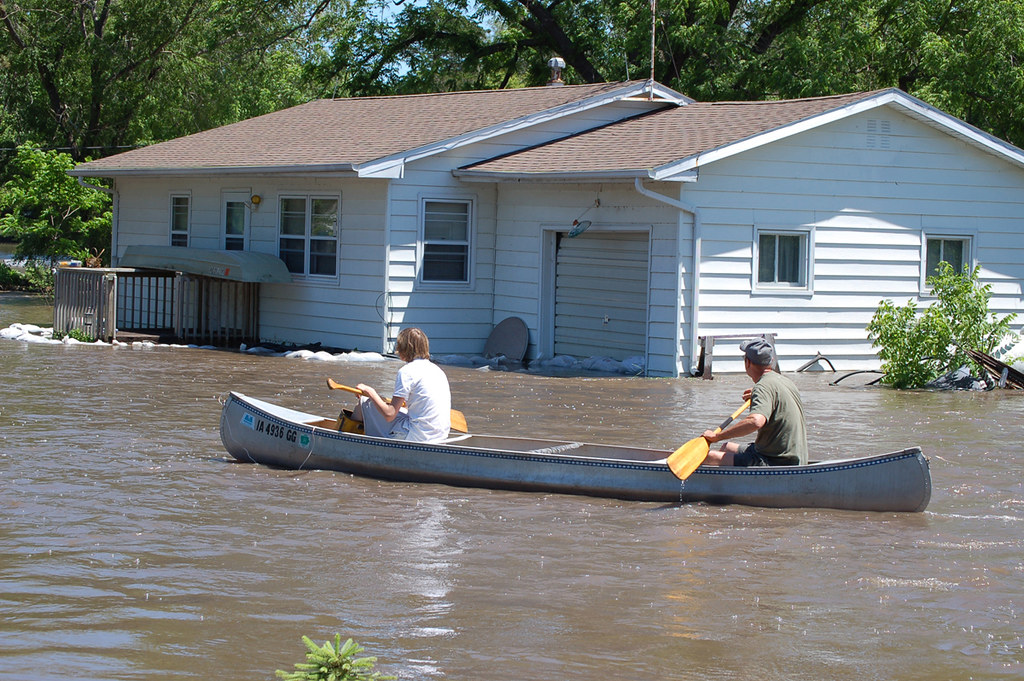Last week, a nominee to lead the Federal Emergency Management Agency generated fireworks when, during his confirmation hearing, he said he does not know the cause of climate change.
The comment reignites the debate over how FEMA, which provides subsidized flood insurance and disaster relief, should respond to the risk climate change poses for both functions. Fortunately, given FEMA’s role, the cause of this increased risk shouldn’t matter. If FEMA recognizes the risk, the only question is figuring out whether and how to respond to it.
Climate change, to the extent it increases the risk of sea-level rise and destructive natural disasters, substantially affects FEMA programs. It increases the National Flood Insurance program’s liabilities if the risks are not appropriately priced (as they’re usually not). And it may increase the frequency and costs of FEMA disaster responses. But that climate change may pose risks that FEMA should account for doesn’t answer how it should do so. Should it, for instance, seek to require communities to enact restrictive zoning measures?
Some groups have long advocated FEMA be more aggressive in pushing local governments to adopt preferred land-use policies. They have, for instance, sued the agency under the Endangered Species Act, claiming that it’s failure to do so makes it responsible for any harms development has on endangered species.
This approach has significant drawbacks, however. First, it risks substantial overreach because development in flood-prone or environmentally vulnerable areas is not inherently misguided. There may be good reasons why a property owner would build a home somewhere, notwithstanding the risks. In coastal areas, for instance, the environmental amenities may greatly exceed these risks for someone who has saved her entire life for the dream of a retirement home near the beach.
Second, more heavy-handed FEMA regulation may increase environmental harms by correlating risks. Federal regulators are, after all, people prone to errors like the rest of us. If land-use decisions are dictated from the federal government, rather than allowed to develop organically by landowners and local governments with diverse interests, the consequences of an error will not be limited to a single area but may affective every community subject to these risks. This is no hypothetical concern. FEMA’s flood maps, which are the basis for its regulatory efforts, are notoriously inaccurate. And efforts to improve them face a host of political challenges.
It may also increase environmental harms in another way: by delaying innovation in mitigation techniques. Devolving decision making to the state, local government, or individual property owners allows for more individual experimentation without risk to others not participating. In the long run, this experimentation promotes cheaper, more effective solutions to environmental challenges.
If not by regulating local zoning decisions, how can FEMA mitigate the risks faced by its programs and property owners? Ideally, it would price flood insurance correctly, so that purchasers would have incentives to invest in effective mitigation. But this is politically challenging. Indeed, when FEMA recently proposed to phase out subsidies, dozens of members of Congress complained about the effects on their constituents and got the agency to delay any changes. There’s also a moral hazard problem if those that forego insurance are nonetheless bailed out by FEMA’s disaster relief program. (The agency regularly points out that such relief is not guaranteed.)
Unless the politics of market-price insurance unexpectedly changes, the best alternative may be for FEMA to invest more in efforts to mitigate its liabilities by reducing flood risks, as private insurers might do if facing similar risks. It may be more cost effective, for instance, for FEMA to use premiums to invest in mitigation strategies than to continue paying out more in claims than it brings in. It might do so by purchasing properties that can serve as a buffer for other vulnerable properties. Or it might invest in green infrastructure that mitigates the harmful effects of flooding.
FEMA’s use of premiums paid into its flood insurance program is limited by Congress. Thus, making such investments requires a congressional appropriation for Flood Mitigation Assistance Grants. However, the Congressional Research Service reports that the agency has underused such appropriations. $160 million is available for this program, yet CRS reports that FEMA only approved $1.13 million in mitigation grants between April 1996 and September 2019.




